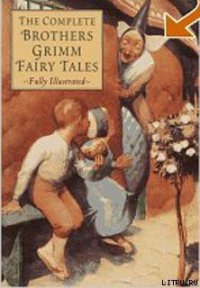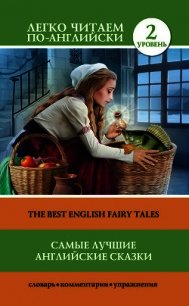Celtic Fairy Tales - Jacobs Joseph (лучшие книги читать онлайн txt) 📗
IV. HORNED WOMEN.
Source.–Lady Wilde’s Ancient Legends, the first story.
Parallels.–A similar version was given by Mr. D. Fitzgerald in the Revue Celtique, iv. 181, but without the significant and impressive horns. He refers to Cornhill for February 1877, and to Campbell’s “Sauntraigh” No. xxii. Pop. Tales, ii. 52 4, in which a “woman of peace” (a fairy) borrows a woman’s kettle and returns it with flesh in it, but at last the woman refuses, and is persecuted by the fairy. I fail to see much analogy. A much closer one is in Campbell, ii. p. 63, where fairies are got rid of by shouting “Dunveilg is on fire.” The familiar “lady-bird, lady-bird, fly away home, your house is on fire and your children at home,” will occur to English minds. Another version in Kennedy’s Legendary Fictions, p. 164, “Black Stairs on Fire.”
Remarks.–Slievenamon is a famous fairy palace in Tipperary according to Dr. Joyce, l.c. i. 178. It was the hill on which Finn stood when he gave himself as the prize to the Irish maiden who should run up it quickest. Grainne won him with dire consequences, as all the world knows or ought to know (Kennedy, Legend Fict., 222, “How Fion selected a Wife”).
V. CONAL YELLOWCLAW.
Source.–Campbell, Pop. Tales of West Highlands, No. v. pp. 105-8, “Conall Cra Bhuidhe.” I have softened the third episode, which is somewhat too ghastly in the original. I have translated “Cra Bhuide” Yellowclaw on the strength of Campbell’s etymology, l.c. p. 158.
Parallels.–Campbell’s vi. and vii. are two variants showing how widespread the story is in Gaelic Scotland. It occurs in Ireland where it has been printed in the chapbook, Hibernian Tales, as the “Black Thief and the Knight of the Glen,” the Black Thief being Conall, and the knight corresponding to the King of Lochlan (it is given in Mr. Lang’s Red Fairy Book). Here it attracted the notice of Thackeray, who gives a good abstract of it in his Irish Sketch-Book, ch. xvi. He thinks it “worthy of the Arabian Nights, as wild and odd as an Eastern tale.” “That fantastical way of bearing testimony to the previous tale by producing an old woman who says the tale is not only true, but who was the very old woman who lived in the giant’s castle is almost" (why “almost,” Mr. Thackeray?) “a stroke of genius.” The incident of the giant’s breath occurs in the story of Koisha Kayn, MacInnes’ Tales, i. 241, as well as the Polyphemus one, ibid. 265. One-eyed giants are frequent in Celtic folk-tales (e.g. in The Pursuit of Diarmaid and in the Mabinogi of Owen).
Remarks.–Thackeray’s reference to the “Arabian Nights” is especially apt, as the tale of Conall is a framework story like The 1001 Nights, the three stories told by Conall being framed, as it were, in a fourth which is nominally the real story. This method employed by the Indian story-tellers and from them adopted by Boccaccio and thence into all European literatures (Chaucer, Queen Margaret, &c.), is generally thought to be peculiar to the East, and to be ultimately derived from the Jatakas or Birth Stories of the Buddha who tells his adventures in former incarnations. Here we find it in Celtdom, and it occurs also in "The Story-teller at Fault” in this collection, and the story of Koisha Kayn in MacInnes’ Argyllshire Tales, a variant of which, collected but not published by Campbell, has no less than nineteen tales enclosed in a framework. The question is whether the method was adopted independently in Ireland, or was due to foreign influences. Confining ourselves to “Conal Yellowclaw,” it seems not unlikely that the whole story is an importation. For the second episode is clearly the story of Polyphemus from the Odyssey which was known in Ireland perhaps as early as the tenth century (see Prof. K. Meyer’s edition of Merugud Uilix maic Leirtis, Pref. p. xii). It also crept into the voyages of Sindbad in the Arabian Nights. And as told in the Highlands it bears comparison even with the Homeric version. As Mr. Nutt remarks (Celt. Mag. xii.) the address of the giant to the buck is as effective as that of Polyphemus to his ram. The narrator, James Wilson, was a blind man who would naturally feel the pathos of the address; “it comes from the heart of the narrator;” says Campbell (l.c., 148), "it is the ornament which his mind hangs on the frame of the story.”
VI. HUDDEN AND DUDDEN.
Source.–From oral tradition, by the late D. W. Logie, taken down by Mr. Alfred Nutt.
Parallels.–Lover has a tale, “Little Fairly,” obviously derived from this folk-tale; and there is another very similar, "Darby Darly.” Another version of our tale is given under the title "Donald and his Neighbours,” in the chapbook Hibernian Talesm whence it was reprinted by Thackeray in his Irish Sketch-Book, c. xvi. This has the incident of the “accidental matricide," on which see Prof. R. Kohler on Gonzenbach Sicil. Mahrchen, ii. 224. No less than four tales of Campbell are of this type (Pop. Tales, ii. 218-31). M. Cosquin, in his “Contes populaires de Lorraine,” the storehouse of “storiology,” has elaborate excursuses in this class of tales attached to his Nos. x. and xx. Mr. Clouston discusses it also in his Pop. Tales, ii. 229-88. Both these writers are inclined to trace the chief incidents to India. It is to be observed that one of the earliest popular drolls in Europe, Unibos, a Latin poem of the eleventh, and perhaps the tenth, century, has the main outlines of the story, the fraudulent sale of worthless objects and the escape from the sack trick. The same story occurs in Straparola, the European earliest collection of folk-tales in the sixteenth century. On the other hand, the gold sticking to the scales is familiar to us in Ali Baba. (Cf. Cosquin, l.c., i. 225-6, 229).
Remarks.–It is indeed curious to find, as M. Cosquin points out, a cunning fellow tied in a sack getting out by crying, “I won’t marry the princess,” in countries so far apart as Ireland, Sicily (Gonzenbach, No. 71), Afghanistan (Thorburn, Bannu, p. 184), and Jamaica (Folk-Lore Record, iii. 53). It is indeed impossible to think these are disconnected, and for drolls of this kind a good case has been made out for the borrowing hypotheses by M. Cosquin and Mr. Clouston. Who borrowed from whom is another and more difficult question which has to be judged on its merits in each individual case.
This is a type of Celtic folk-tales which are European in spread, have analogies with the East, and can only be said to be Celtic by adoption and by colouring. They form a distinct section of the tales told by the Celts, and must be represented in any characteristic selection. Other examples are xi., xv., xx., and perhaps xxii.


